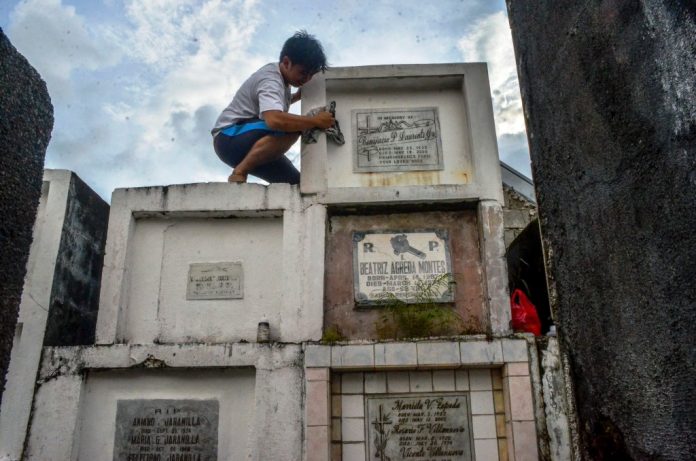
ILOILO City – When will the city government implement the regulation ordinance approved five years ago aimed at addressing congestion in public cemeteries? Regulation Ordinance No. 2013-238 seeks to establish columbaria or small bone boxes in cemeteries.
“Need ta na gid tani ipatuman,” said Councilor Ely Estante, author of the ordinance. “We have to decongest our cemeteries.”
A columbarium is considered a practical solution to the congestion.
Estante, however, acknowledged that the ordinance’s implementation largely depends on the availability of funds and the city mayor’s resolve to make it happen.
“Naplastar ta na nga ordinance. Depende na sa chief executive kon ipatuman or indi,” Estante told Panay News.
Will he press Mayor Jose Espinosa III to enforce the ordinance?
“Indi ta man na sila mapilit,” said Estante.
Last year, after the inconvenience he experienced on Nov. 1 during a visit to the tomb of his father at the city’s public cemetery in Barangay Tanza-Timawa 1 , Espinosa said he was considering putting up columbaria – but in a new location and not inside the city’s congested public cemeteries.
The city government, through the City Environment and Natural Resources Office (CENRO), is overseeing three public cemeteries – the one in Barangay Timawa-Tanza 1, City Proper; in Barangay Quintin Salas, Jaro district; and in Barangay Jereos, La Paz district. All are congested.
It was in 2011 when Estante first suggested that cremation services for the dead be made available to ease the overcrowding in the cemeteries, then the ashes of the dead would be placed in space-saving columbaria.
In 2013, the Sangguniang Panlungsod passed Regulation Ordinance 2013-238.
The Catholic Church also maintains cemeteries in the districts of Jaro, Mandurriao, La Paz, City Proper, and Arevalo but these suffer from overcrowding, too.
There are spacious privately-managed cemeteries in the city – at least four located mostly in Jaro and Mandurriao – but not all city residents can afford to bury their dead in them.
“We want to implement the ordinance. Subong bal-an ko maglubong, wala na lugar. Mahal na,” Espinosa told journalists while inspecting public cemeteries on Wednesday.
He, however, stressed the importance of conducting consultations to get the public’s sentiments on the proposed columbaria even if the city council already conducted several of these prior to approving Regulation Ordinance 2013-238.
“Ilonggos are traditionalists. Mga patay tandugon mo may mga adverse reactions gid,” said Espinosa.
Should his administration push through with the columbaria, the mayor also wanted these built in a new area and not within existing public cemeteries.
“The people’s sentiments should be respected,” Espinosa stressed.
Another problem in public cemeteries here is the quality of the concrete niches stacked one over the other. Just this August, 18 tombs at the public cemetery in Barangay Timawa-Tanza collapsed. Incessant rains were the culprits, according to the CENRO.
Another factor was the poor quality of the tombs, said Engr. Noel Hechanova, CENRO chief.
“Unregulated ang pag-construct, therefore their quality is questionable,” said Hechanova.
It was not the first time tombs at the cemetery collapsed. A similar incident happened some five years ago, according to the CENRO head.
The age of the tombs may have also factored in what happened, said Hechanova.
The tombs that collapsed were those that were stacked one over the other in layers.
Tanza cemetery has over 10,000 tombs, according to Hechanova.
The CENRO chief said the Tanza cemetery was actually up for rehabilitation. Phase 1 had a budget of P1 million, he disclosed./PN




